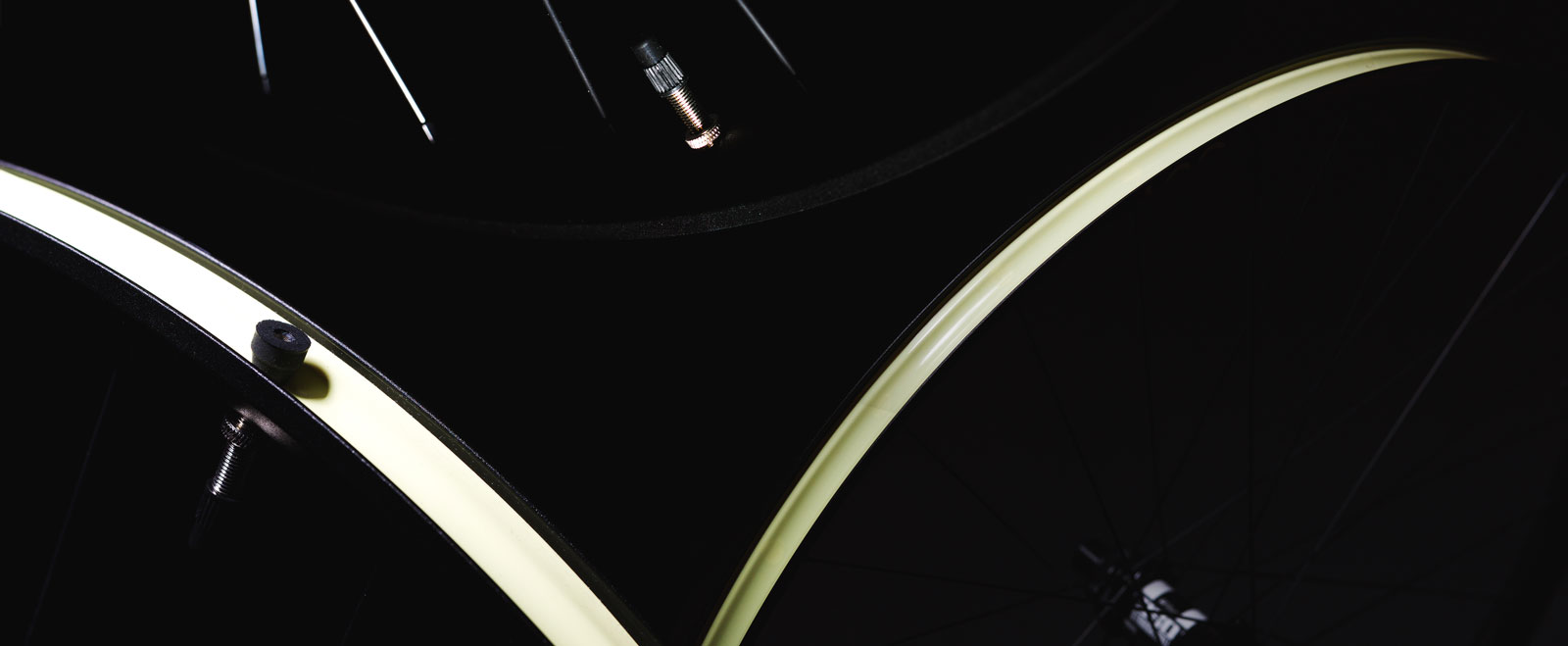Tires without tubes: what does tubeless technology bring?
The tubeless system has long proven itself in the MTB sector, especially on demanding trails and rough terrain. But what about racing bikes and gravel bikes? Here the advantages of the tubeless system are not always so clear - and they are often not proportional to the potential disadvantages. In this article we take a closer look at the tubeless system for racing bikes and gravel bikes. We show the most important advantages, explain how to refill the sealing milk correctly and what maintenance steps are necessary. At the same time, we take a look at possible disadvantages so that you can make an informed decision. Lemonbike – innovation meets riding comfort at...

Tires without tubes: what does tubeless technology bring?
The tubeless system has long proven itself in the MTB sector, especially on demanding trails and rough terrain. But what about racing bikes and gravel bikes? Here the advantages of the tubeless system are not always so clear - and they are often not proportional to the potential disadvantages. In this article we take a closer look at the tubeless system for racing bikes and gravel bikes. We show the most important advantages, explain how to refill the sealing milk correctly and what maintenance steps are necessary. At the same time, we take a look at possible disadvantages so that you can make an informed decision.
Lemonbike – innovation meets riding comfort
At Lemonbike relies on modern bicycle technologies that perfectly combine riding comfort, safety and performance. Thanks to innovative solutions such as the tubeless system, you benefit from better puncture protection, optimal traction and a smooth ride - whether on asphalt or gravel roads. High-quality components and well-thought-out designs ensure that you can enjoy your rides worry-free. You can find everything for the tubeless system on the website lemonbike.eu.

-
The main advantages of the tubeless system
1. Lower risk of breakdowns
With a tubeless setup, the risk of flat tires is significantly reduced because there is no tube that could be damaged by thorns, broken glass or sharp stones. Small punctures are immediately sealed by the sealant inside the tire, so you often don't even notice that you have driven over an obstacle. Of course, there are limits: with larger cuts or cracks, even the best sealing fluid won't help - but don't worry, there are clever emergency solutions that we'll discuss later.
2. More comfort thanks to lower tire pressure
Since there is no longer a hose, you can ride with less air pressure without the risk of a snakebite (puncture). This not only means more comfort on rough surfaces, but also better traction and control - a decisive advantage on gravel roads or technical trails. This is particularly noticeable when gravel biking: less pressure ensures a smoother ride and increases safety because the tires adhere better to the surface.
The tubeless system requires continuous monitoring to function effectively
The right amount of sealing milk is crucial for effective puncture protection. ForRoad bike tiresbecomeat least 50 mlrecommended, as the high air pressure would otherwise allow the sealant to escape too quickly.Gravel tiresneed a little more – about70-80ml, depending on width.
To ensure that the seal remains reliable, you should do everything2-3 months approx. 20 mlrefill. If you travel a lot or have minor breakdowns often, refilling more frequently may make sense.Tip:The easiest way is directly via the valve – take off the valve cap, put in the sealing milk, done!
How to use tubeless correctly – tips for a worry-free ride
- Dichtmilch nicht mischen! Beim Wechsel des Herstellers den Reifen gründlich reinigen, um unerwünschte Reaktionen zu vermeiden.
• Genug Dichtmittel im Reifen? Einfach das Laufrad ausbauen und kräftig schütteln – wenn du nichts hörst, ist Nachfüllen angesagt.
• Längere Standzeit? Vor dem Nachfüllen den Reifen und die Felge reinigen, um alte Dichtmittelreste zu entfernen.
• Winterpause? Dichtmilch entfernen, um ein Austrocknen zu vermeiden, oder das Laufrad alle 1–2 Wochen drehen.
• Ventil checken! Rückstände können das Aufpumpen erschweren – regelmäßig reinigen oder bei Bedarf den Ventileinsatz austauschen.
• Reifendruck beachten! Tubeless-Reifen laufen mit weniger Druck als klassische Modelle, was den Komfort erhöht und den Rollwiderstand senkt.
Disadvantages of the tubeless system
- Komplexität bei Montage und Demontage – Die Installation ist anspruchsvoller als bei Schlauchreifen und erfordert Übung sowie oft einen Luftkompressor für das korrekte Aufpumpen.
• Höhere Kosten – Tubeless-Reifen, Dichtmilch, spezielles Felgenband und Ventile verursachen höhere Anschaffungskosten als klassische Systeme mit Schlauch.
• Regelmäßige Wartung – Dichtmilch muss kontrolliert und nachgefüllt werden, da sie mit der Zeit austrocknet oder bei Pannen teilweise austreten kann.
• Schwierigkeiten bei der Druckstabilität – Tubeless-Reifen verlieren auf natürliche Weise langsam Luft, daher ist regelmäßiges Nachprüfen und Anpassen des Reifendrucks erforderlich.
• Schwierige Reparaturen unterwegs – Größere Schäden, die Dichtmilch nicht abdichten kann, erfordern spezielle Reparatursets oder den Einsatz eines Ersatzschlauchs.
• Lagerung in der „Off-Season“ – Eine lange Standzeit kann die Dichtmilch eintrocknen lassen, was Ablagerungen verursacht. Vor der Winterpause sollte sie entfernt und vor der nächsten Nutzung erneuert werden.
Conclusion
The tubeless system offers many advantages: better puncture protection, the ability to ride with lower tire pressure, as well as greater comfort and improved traction - especially for gravel bikes and MTBs.
In racing bikes, the comfort gain is lower because higher air pressure is required. Nevertheless, the sealing milk ensures greater safety by immediately sealing small punctures and allowing you to continue driving - without the classic hose change.
However, tubeless also entails higher costs and more maintenance. Anyone who is willing to get to grips with the technology and regularly refill sealant will benefit from the strengths of the system. Ultimately, the decision depends on your own driving habits and priorities. You can find everything for the tubeless system on the website lemonbike.eu.

 Suche
Suche
 Mein Konto
Mein Konto